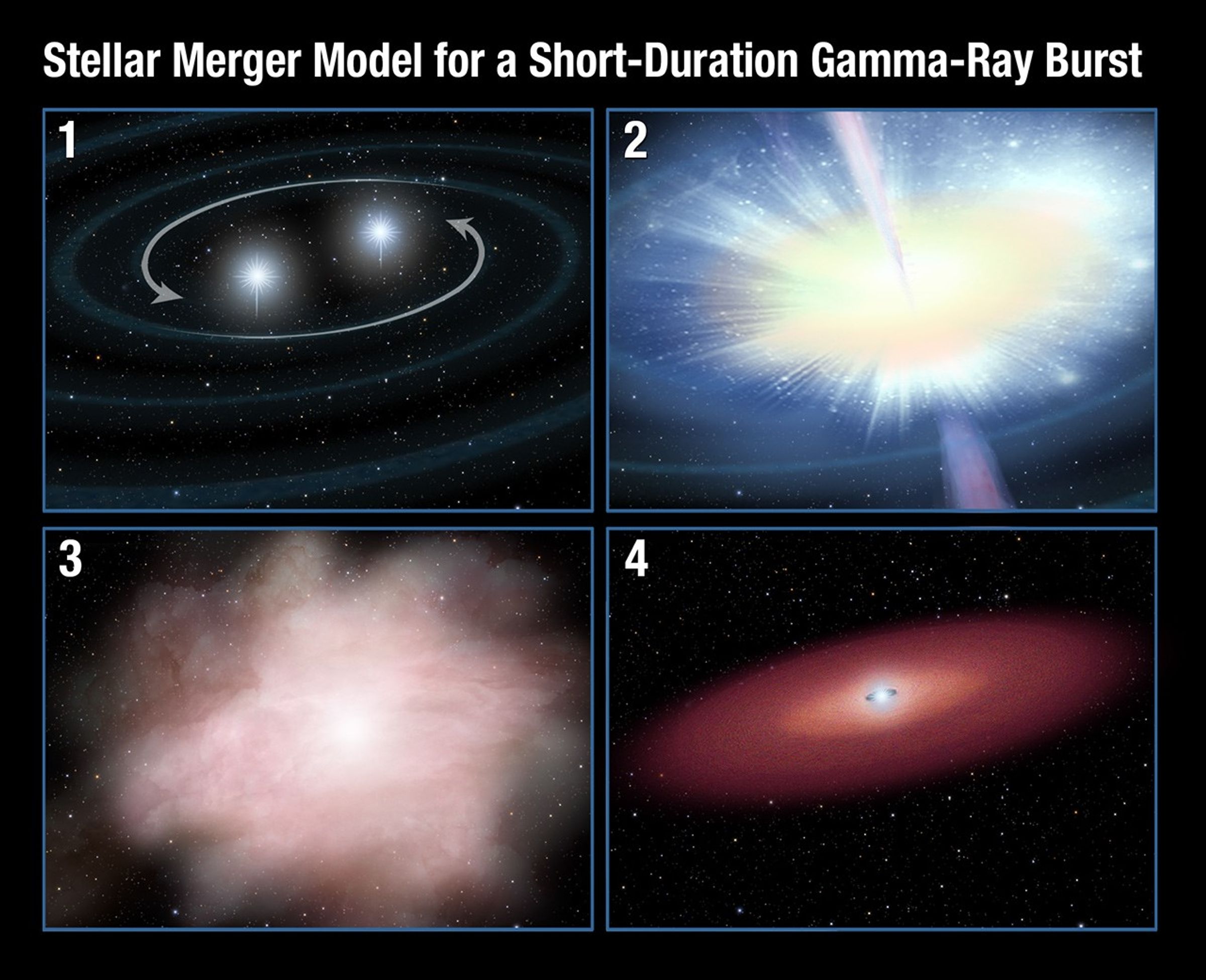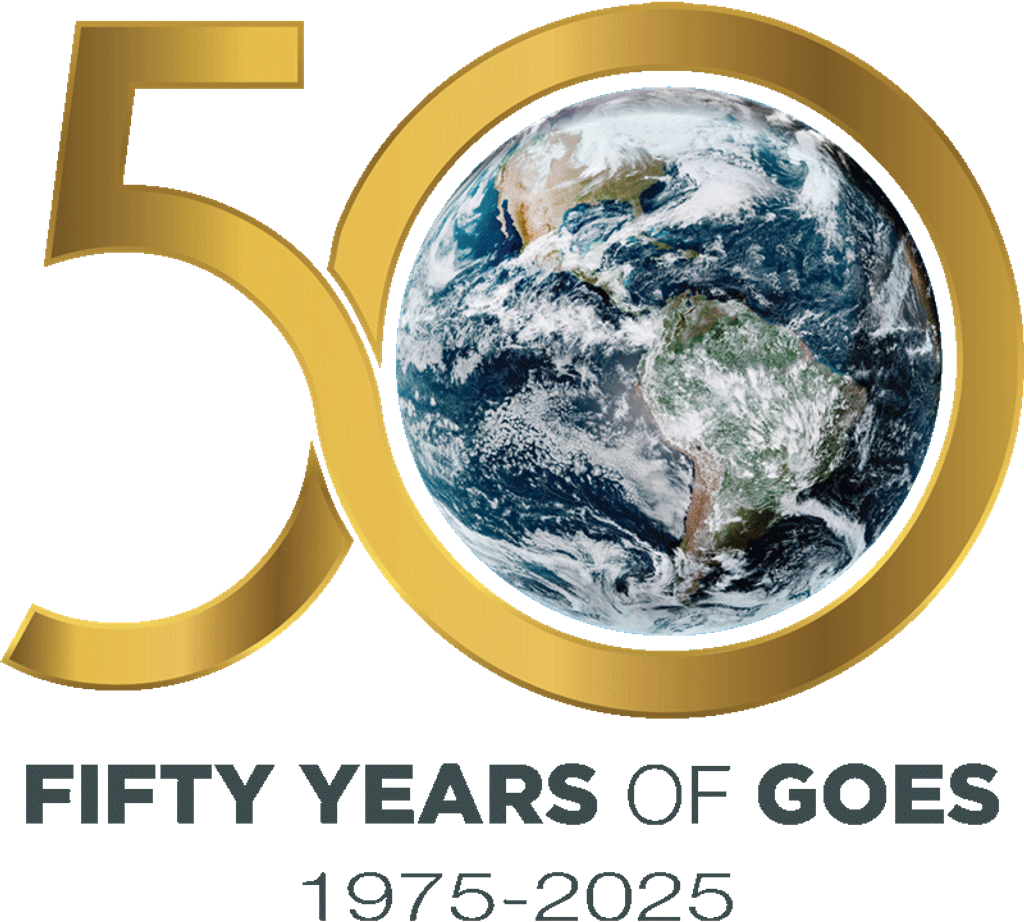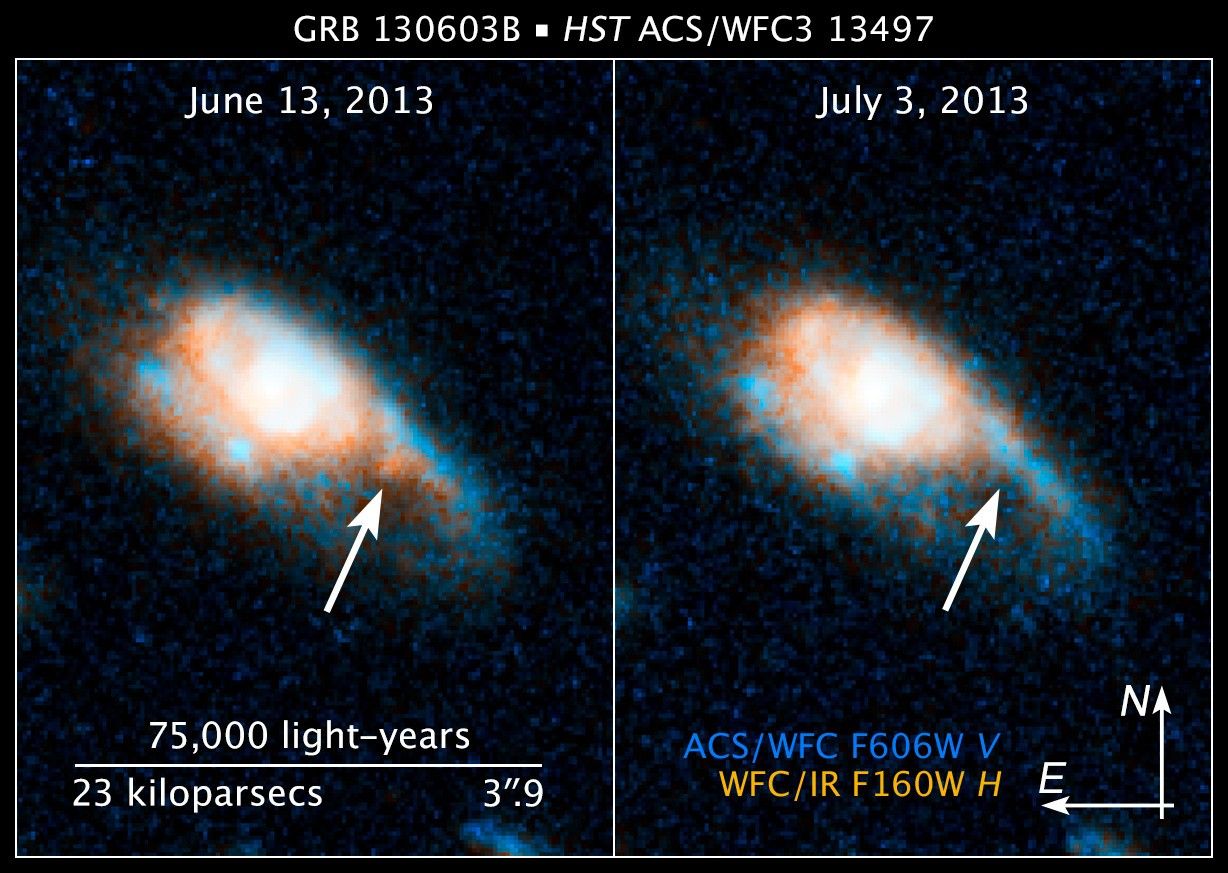1 min read
GRB 130603B Host and Surrounding Field

About the Object
- R.A. PositionR.A. PositionRight ascension – analogous to longitude – is one component of an object's position.11h 28m 48.16s
- Dec. PositionDec. PositionDeclination – analogous to latitude – is one component of an object's position.17° 4' 18.19"
- ConstellationConstellationOne of 88 recognized regions of the celestial sphere in which the object appears.Leo
- DistanceDistanceThe physical distance from Earth to the astronomical object. Distances within our solar system are usually measured in Astronomical Units (AU). Distances between stars are usually measured in light-years. Interstellar distances can also be measured in parsecs.4 billion light-years (1.2 billion parsecs)
About the Data
- Data DescriptionData DescriptionProposal: A description of the observations, their scientific justification, and the links to the data available in the science archive.
Science Team: The astronomers who planned the observations and analyzed the data. "PI" refers to the Principal Investigator.The image was created from Hubble data from proposal 13497: N. Tanvir (University of Leicester), J. Hjorth (University of Copenhagen, Niels Bohr Institute), A. Levan (University of Warwick), K. Wiersema (University of Leicester), and A. Fruchter (STScI). The science team includes: N. Tanvir (University of Leicester), A. Levan (University of Warwick), A. Fruchter (STScI), J. Hjorth (University of Copenhagen, Niels Bohr Institute), R. Hounsell (STScI), K. Wiersema (University of Leicester), and R. Tunnicliffe (University of Warwick). - InstrumentInstrumentThe science instrument used to produce the data.HST>ACS/WFC and HST>WFC3/IR
- FiltersFiltersThe camera filters that were used in the science observations.ACS/WFC: F606W (V) WFC3/IR: F160W (H)
- Object NameObject NameA name or catalog number that astronomers use to identify an astronomical object.SDS J112848.22+170418.5
- Object DescriptionObject DescriptionThe type of astronomical object.Distant Galaxy
- Release DateAugust 3, 2013
- Science ReleaseHubble Finds ‘Smoking Gun’ After Gamma-Ray Blast
- Credit

This image is a composite of separate exposures acquired by the ACS/WFC and WFC3/IR instruments. Several filters were used to sample various wavelengths. The color results from assigning different hues (colors) to each monochromatic (grayscale) image associated with an individual filter. In this case, the assigned colors are: Blue/cyan: F606W (V) Orange: F160W (H)

Related Images & Videos

Gamma-ray Burst 130603B
These images taken by NASA's Hubble Space Telescope reveal a new type of stellar explosion produced from the merger of two compact objects. Hubble spotted the outburst while looking at the aftermath of a short- duration gamma-ray burst, a mysterious flash of intense high-energy...

Stellar Merger Model for Gamma-ray Burst
Panel 1: A pair of neutron stars in a binary system spiral together. Orbital momentum is dissipated through the release of gravity waves, which are tiny ripples in the fabric of space-time. Panel 2: In the final milliseconds, the two objects merge and produce a gamma-ray burst...
Share
Details
Claire Andreoli
NASA’s Goddard Space Flight Center
Greenbelt, Maryland
claire.andreoli@nasa.gov





































